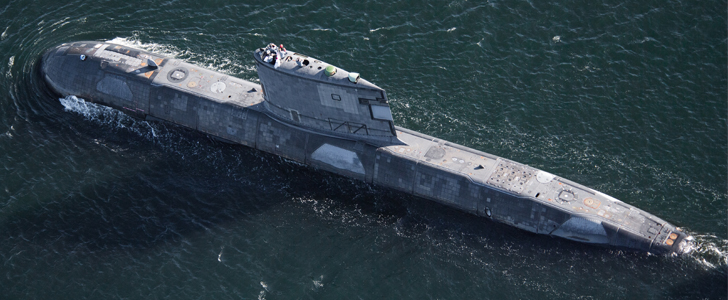Victoria-class Submarines
Submarines are part of the unseen force of the nation; they are stealthy, lethal and persistent, making them ideal for surveillance and intelligence gathering. In an emerging crisis, a submarine presence can profoundly shape regional decision-making, and a submarine’s lethality can contribute decisively to combat operations, both in defending ships on the surface and placing opposing forces at peril. Canada’s Victoria-class submarine fleet has been active at sea since 2003.

Canadian submarines are an important element of Canada’s strategic relationships with the United States and NATO. As a submarine-operating NATO nation, Canada has privileged access to intelligence that it would not otherwise have.
A submarine, when warranted, may be part of a Naval Task Group – the core Royal Canadian Navy (RCN) operating concept.
With a composition of up to four surface combatants, a joint support ship, and a submarine when needed, the Naval Task Group concept allows the RCN to sustain a major international operation while retaining sufficient capacity to:
- maintain minor operations and/or respond to maritime security taskings at home,
- maintain a routine presence in Canada’s three oceans; and
- contribute to operations in support of North American security.
- Op Projection Euro-Atlantic – In 2018, HMCS Windsor deployed for 133 days to the Euro-Atlantic region -- the first time a Canadian submarine was operational in the Mediterranean in more than four decades.
- Op Projection Asia-Pacific - In 2017, HMCS Chicoutimi deployed for 197 days to the western Pacific: the longest deployment for the class, and the first time a Victoria-class sub operated in the region. Chicoutimi also made the first port visit to Japan by a Canadian submarine in 50 years.
- 2017 Annualex with the United States Navy and the Japanese Maritime Self-Defense Force.